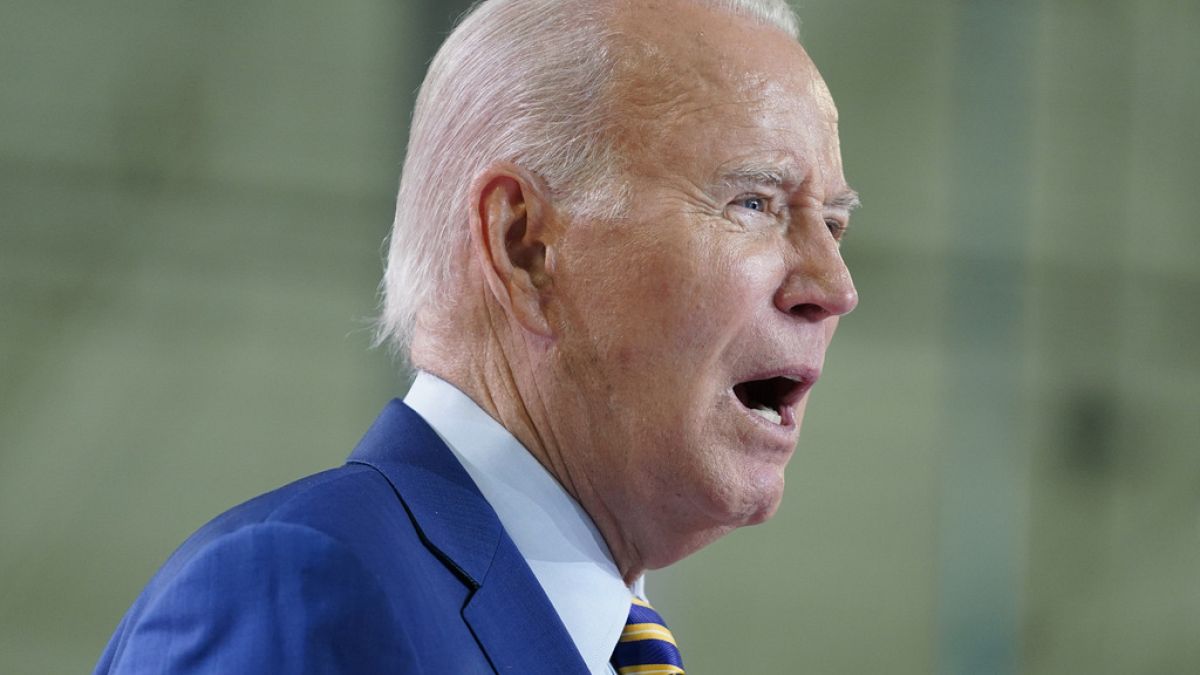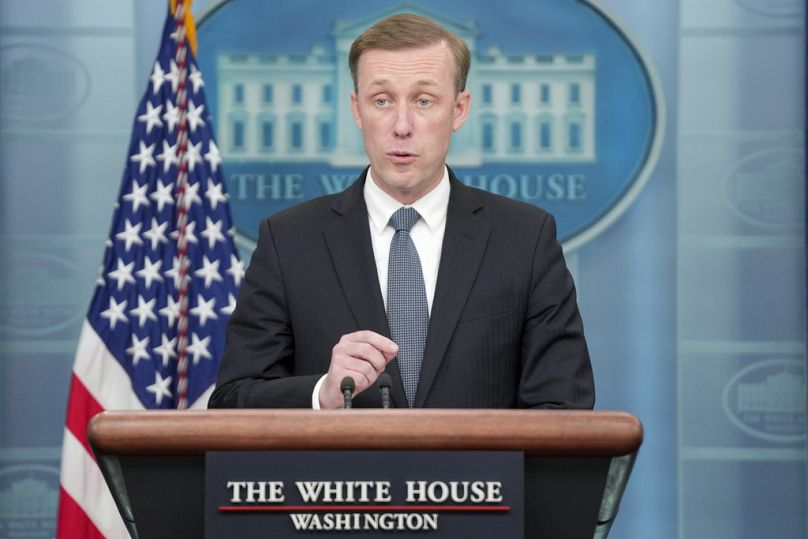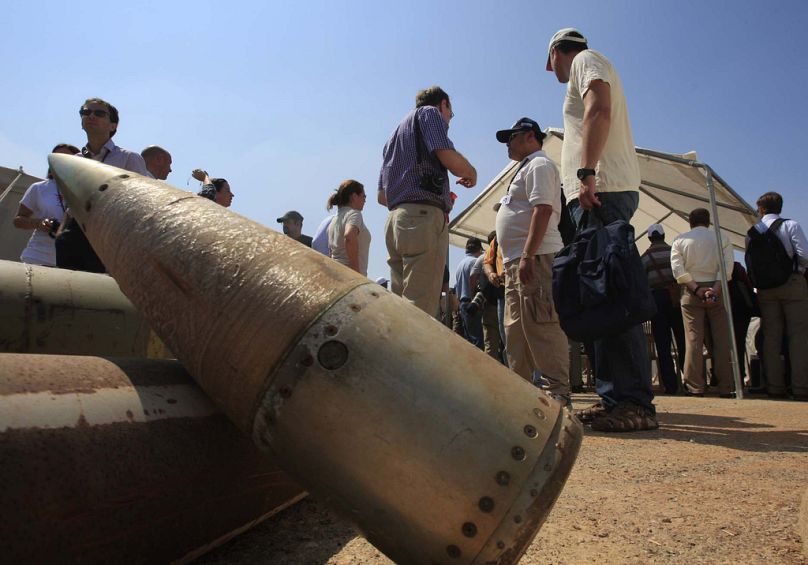Long sought by Ukraine, cluster bombs are weapons that open in the air, releasing submunitions, or bomblets, that are dispersed over a large area and are intended to wreak destruction on multiple targets at once.
The Biden administration will provide thousands of cluster munitions to Ukraine, national security adviser Jake Sullivan said Friday, vowing the US will not leave Ukraine defenceless and that Kyiv has promised to use the controversial munitions carefully.
The decision comes on the eve of the NATO summit in Lithuania, where President Joe Biden is likely to face questions from allies on why the US would send a weapon into Ukraine that more than two-thirds of alliance members have banned because it has a track record for causing many civilian casualties.
The munitions — which are bombs that open in the air and release scores of smaller bomblets — are seen by the US as a way to get Kyiv critically needed ammunition to help bolster its offensive and push through the Russian front lines. US leaders debated the thorny issue for months before Biden made the final decision this week.
Sullivan defended the decision, saying Washington will send a version of the munition that has a reduced “dud rate,” meaning fewer of the smaller bomblets fail to explode. The unexploded rounds, which often litter battlefields and populated civilian areas, cause unintended deaths.
“We recognise the cluster munitions create a risk of civilian harm from unexploded ordnance,” he told a White House briefing. “This is why we’ve deferred the decision for as long as we could"
According to the International Committee of the Red Cross, some cluster munitions leave behind bomblets that have a high rate of failure to explode — up to 40% in some cases. The rate of unexploded ordnance for the munitions that will be going to Ukraine is under 3% and therefore will mean fewer unexploded bombs left behind to potentially harm civilians.
A convention banning the use of cluster bombs has been joined by more than 120 countries that agreed not to use, produce, transfer or stockpile the weapons and to clear them after they’ve been used. The United States, Russia and Ukraine are among those who have not signed on.
Ryan Brobst, a research analyst for the Foundation for Defence of Democracies, said that while the majority of NATO members have signed on to the cluster munitions ban, several of those nearest Russia — Estonia, Latvia, Poland, Romania and Turkey — have not.
“The most important of those are Poland and Romania,” Brobst said, noting that the US weapons will probably go through those countries en route to Ukraine. “While some allies raise objections, this is not going to prevent (cluster munitions) from being transferred into Ukraine.”
The cluster munitions are included in a new €735 million package of military aid the US will send to Ukraine. Friday’s package, which will come from Pentagon stocks, will also include Bradley and Stryker armoured vehicles and an array of ammunition, such as rounds for howitzers and the High Mobility Artillery Rocket System, officials said.
Providing the cluster bombs will also ease the pressure on limited US ammunition stockpiles. The US has been taking massive amounts of 155 mm rounds from Pentagon stocks and sending them to Ukraine, creating concerns about eating into American stores. The cluster munitions, which are fired by the same artillery as the conventional 155 mm, will give Ukraine a highly lethal capability and also allow them to strike more Russian targets using fewer rounds.
At a Pentagon briefing Thursday, Brig. Gen. Pat Ryder said the Defence Department has “multiple variants” of the munitions and “the ones that we are considering providing would not include older variants with (unexploding) rates that are higher than 2.35%.”
He said the US “would be carefully selecting rounds with lower dud rates, for which we have recent testing data.”
So far the reactions from allies have been muted. NATO Secretary-General Jens Stoltenberg stressed on Friday that the military alliance takes no position on cluster munitions and it is a decision that allies will make. And Germany, which has signed the ban treaty, said it won’t provide the bombs to Ukraine, but expressed understanding for the American position.
“We’re certain that our US friends didn’t take the decision about supplying such ammunition lightly,” German government spokesman Steffen Hebestreit told reporters in Berlin.
Oleksandra Ustinova, a member of Ukraine’s parliament who has been advocating that Washington send more weapons, noted that Ukrainian forces have had to disable mines from much of the territory they are winning back from Russia. As part of that process, Ukrainians will also be able to catch any unexploded ordnance from cluster munitions.
“We will have to de-mine anyway, but it’s better to have this capability,” Ustinova said.
The last large-scale American use of cluster bombs was during the 2003 invasion of Iraq, according to the Pentagon. But US forces considered them a key weapon during the invasion of Afghanistan in 2001, according to Human Rights Watch. In the first three years of that conflict, it is estimated the US-led coalition dropped more than 1,500 cluster bombs in Afghanistan.
Proponents of banning cluster bombs say they kill indiscriminately and endanger civilians long after their use.
Marta Hurtado, speaking for the UN human rights office also said: “We will urge the Russian Federation and Ukraine to join the more than 100 states that have ratified the convention of cluster munitions and that effectively ban their use."


